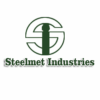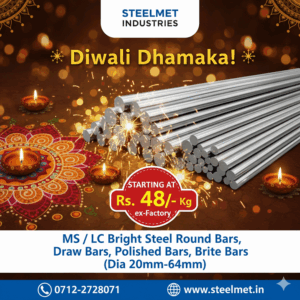Are you looking for a reliable low-carbon steel but confused by the different grades in the EN3 series? You’re not alone. While these grades are all ideal for applications requiring case hardening, they each have subtle differences in their chemical composition that dramatically affect their machinability and mechanical properties. In this expert guide, we’ll break down the key differences between EN3, EN3A, EN3B, and EN3C to help you choose the perfect steel for your manufacturing needs.
An Overview of the EN3 Series
The EN3 series consists of low-carbon, non-alloy steels defined by the British Standard BS 970 (1955). These grades are not typically used in a through-hardened state. Instead, their low carbon content makes them easy to machine and form, and they can be case hardened to achieve a hard, wear-resistant surface while maintaining a tough, ductile core. They are widely used for general engineering components that require a combination of durability and toughness.
Chemical Composition Comparison
The key differences between these grades are not in their carbon content, but in their manganese, sulfur, and phosphorus levels. These variations are what give each grade its specific characteristics.
| Grade | Carbon (C) | Manganese (Mn) | Sulphur (S) | Phosphorus (P) |
|---|---|---|---|---|
| EN3 | 0.15–0.25% | 0.70–1.00% | 0.06% max | 0.06% max |
| EN3A | 0.15–0.25% | 0.70–1.00% | 0.10–0.15% | 0.06% max |
| EN3B | 0.15–0.25% | 0.60–0.90% | 0.06% max | 0.06% max |
| EN3C | 0.15–0.25% | 0.90–1.20% | 0.06% max | 0.06% max |
Note: The primary difference is the increased sulfur in EN3A for improved machinability and the increased manganese in EN3C for better strength and hardenability.
Mechanical Properties Comparison (Indicative)
The mechanical properties of these grades are generally similar in their soft state but can differ significantly after case hardening. Here are the typical properties of the grades in their normalized condition.
| Grade | Tensile Strength (MPa) | Yield Strength (MPa) | Elongation (%) | Hardness (BHN) |
|---|---|---|---|---|
| EN3 | 430–540 | ~250 | ~20 | 121–187 |
| EN3A | Similar to EN3 | Similar | ~20 | 121–187 |
| EN3B | Similar to EN3 | Similar | ~20 | 121–187 |
| EN3C | 460–620 | ~280 | ~18 | 131–207 |
Note: The higher manganese content in EN3C contributes to its slightly higher strength and hardness.
For custom specifications and certified properties, trust Steelmet Industries. We provide mill test certificates with every order. Contact us today for a quote!
Machinability, Weldability, and Applications
Choosing between these grades often comes down to a trade-off between machinability and other properties. The grades with lower sulfur are easier to weld and forge, but more challenging to machine at high speeds.
| Grade | Machinability | Weldability | Primary Applications |
|---|---|---|---|
| EN3 | Good | Excellent | General-purpose engineering, case-hardened components |
| EN3A | Better | Good | Automatic machining, small precision components |
| EN3B | Good | Excellent | Bright drawn parts, bolts, studs, shafts |
| EN3C | Good | Fair | Heavy-duty shafts, gears, high-strength case-hardened parts |
How to Choose: EN3 vs EN3A vs EN3B vs EN3C
Making the right choice depends entirely on your specific manufacturing priorities. Use this quick guide to find the best fit for your needs.
| Your Primary Need | Choose This Grade |
|---|---|
| General-purpose case hardening with excellent weldability | EN3 |
| High-speed turning and machining | EN3A |
| Bright drawn finish and general-purpose bolts | EN3B |
| Slightly higher strength and toughness after hardening | EN3C |
From the Experts at Steelmet Industries
The beauty of the EN3 series is its versatility. By understanding the subtle differences, you can optimize your material choice to improve manufacturing efficiency or enhance the final product’s performance. The higher manganese in EN3C, for example, is a simple change that makes a significant difference in its core strength after heat treatment compared to EN3. Always consider the final application and manufacturing process when making your decision.
For more detailed advice on material selection, feel free to contact our team at Steelmet Industries for a free consultation. Call us at +91-712-2728071 or send a message on WhatsApp at the same number.
Frequently Asked Questions (FAQs)
Q: What is the main difference between EN3 and EN3C?
A: The main difference is the higher manganese content in EN3C. This gives it better mechanical properties and hardenability, making it suitable for heavier-duty case-hardened parts compared to EN3.
Q: Can these grades be welded?
A: EN3 and EN3B have excellent weldability. The free-machining EN3A is more difficult to weld due to its higher sulfur content, and EN3C’s higher manganese makes it a bit more sensitive to welding.
Q: What are the modern equivalents for these grades?
A: In later standards, EN3 is often replaced by grades like 045M10 or 080A15. EN3A is similar to 230M07, while EN3B is comparable to 070M20. EN3C may be replaced by 1113 or similar grades with enhanced mechanical properties.


